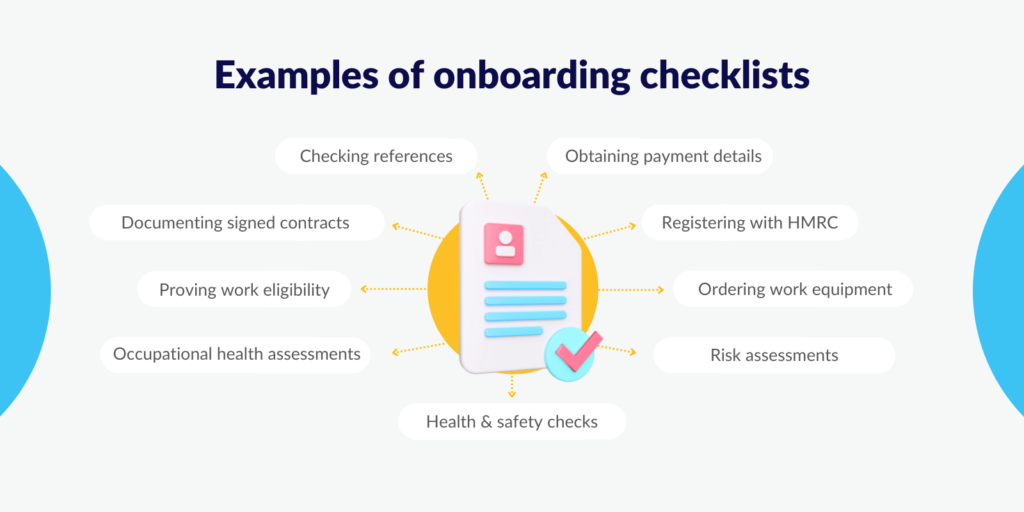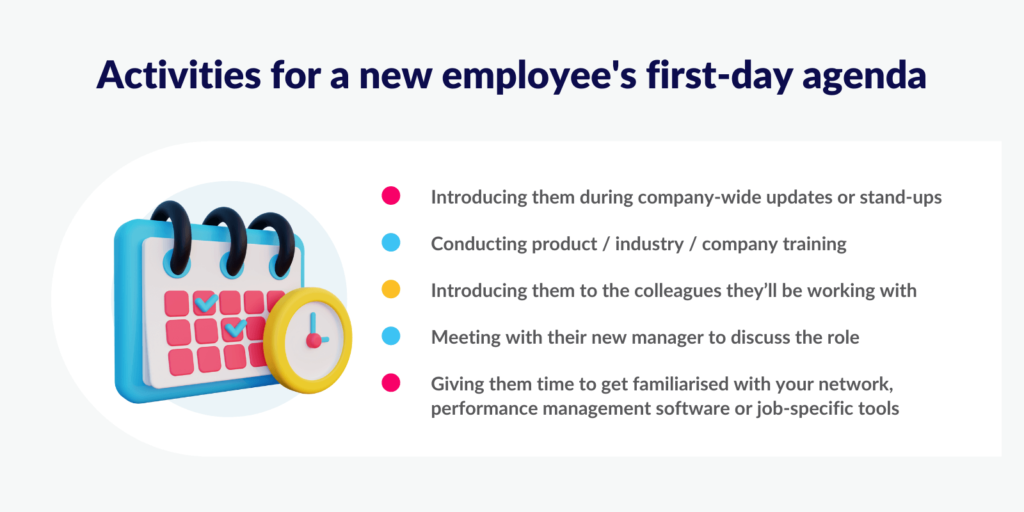A frequently used term in the talent life cycle is employee onboarding. But what is onboarding? It essentially boils down to the processes you put in place to welcome new hires into your business.
When taking on a new employee, you need them to become familiarised with your company as soon as possible. Onboarding processes are used to help new hires get up to speed as quickly as possible, to ensure that they are valuable members of your team.
In this guide, we discuss all aspects of onboarding leaning, into our expertise in helping organisations implement successful strategies. We cover:
- What onboarding is
- Why onboarding is important
- What’s included in a successful onboarding process
What is onboarding?
A strong onboarding process is your opportunity to familiarise new hires in your business. It’s a key part of building a thriving company culture, establishing them as a member of your team.
Successful onboarding results in every new employee fully understanding their role and how they contribute to company goals. They’ll be familiar with your business aims, values and policies. It puts them in the best position to be productive as soon as possible, leading to career development and increased job satisfaction.
Why is onboarding important?
A study by Career Builder found that 93% of employers believe that a good onboarding experience is key to employee retention. Your onboarding process is one of the earliest impressions you’ll make on new employees.
Focusing on creating a well-rounded onboarding process results in improved company culture. New hires are able to connect with and establish working relationships with their colleagues. This eases the transition into their new role, becoming productive members of your team faster and allowing you to improve job satisfaction.
How long does an onboarding process take?
HR professionals recommend a period of three months to successfully onboard a new employee. However, the Career Builder study found that 72% of businesses spend a month or less focusing on integrating new hires.
Adopting a longer, more rounded, onboarding process helps to create an irresistible company culture. Make sure that any new employee that joins your team feels welcomed, supported and trusted to deliver their best results.
What does the employee onboarding process look like?
Before day one
The onboarding process should begin as soon as your new hire accepts the job. The period between accepting a new role and actually starting should create excitement. However, if you don’t make an effort to onboard new hires immediately, it can result in a negative employee experience.
Accepting a job and then hearing nothing afterwards can be an anxious time. If a new employee is simply given a start date and no further instruction, they could become nervous about their new role. To start a successful onboarding process before a new employee starts, consider:
- Asking their direct manager to get in touch to offer congratulations on securing the role
- Sending an agenda of their first day and planned training
- Providing a welcome pack with clear directions, dress code and relevant office policies
- Sending an HR ‘check-in’ email in the week leading up to their start date to answer any last-minute queries

Onboarding checklists
There are a wide range of checklists that you may need to follow when onboarding a new employee. This can include:
- Documenting their signed contracts
- Checking their references
- Ensuring their work equipment is ordered
- Obtaining their payment details
- Registering them with HMRC
- Proof of eligibility to work
- Occupational Health assessment (if needed)
- Relevant Risk Assessment and Health & Safety checks

If you’re using HR operations software, you should be able to speed this process up and make it effortless with automations. You can set up workflows or tasks that send emails to gather the correct PAYE information for new employees, assign them to a manager and document their agreement to policies.
Support employees on their first day
The first day of employment can be overwhelming, so make sure that your new hire feels at ease. Be careful with swamping new employees with meetings and KPI setting immediately. On the other hand, not organising enough team interaction can leave them unsure of where they stand.
Schedule their time effectively
For an engaging first day, it’s important to make sure that your new employee is given access to the people they’ll be working with. Before they start, add relevant appointments to their calendar that will help familiarise them with your business.

Great ideas for a first-day agenda include:
- Introducing them during company-wide updates or stand-ups
- Conducting product / industry / company training
- Introducing them to the colleagues they’ll be working closely with
- Meeting with their new manager to discuss the role
- Giving them time to get familiarised with your network, performance management software or job-specific tools
Give an onboarding gift (or some nice swag)
You want to build a working relationship that lasts, so there’s no harm in showing your appreciation from day one. It can be as simple as providing your new hire with branded company clothing, stationery or accessories to make them feel part of the team.
If you want to go the extra mile, show your new hires how excited you are to have them on board. A simple ‘welcome’ gift of biscuits, treats or even a personal card highlights the key role you’re hoping they will play.
Personalise your welcome kit
Your welcome kit should include all the relevant documentation that your new hire needs. Paper copies of contracts, office policies and company information may not seem the most engaging item. However, you have the opportunity to present this information in an interesting way.
Consider branding the documents into a stylised ‘welcome kit’, adding in a personal message for your CEO. If you can present these documents all at once, with a great design throughout, it’s more likely to be digested and remembered.
Make it fun with onboarding games
Make your first day feel fun with some truly engaging ice-breakers. These give your new employee the opportunity to get to know their colleagues in a more informal setting. Whether you’re onboarding an employee in-person or remotely, there are numerous fun office games to boost morale available.
During the first week on the job
To make sure your new hire feels welcomed, yet has time to familiarise themselves with their new role, extend your agenda to encompass their first week of employment.
Often, there will be some HR-related activities that all new employees need to complete. That could include watching health and safety videos, completing accreditations or Rather than sending new hires a worksheet, take this time to book an hour with HR.
After the first month
Keeping a new hire engaged and helping them to develop requires regular feedback and communication. Indeed recommends setting up a 30, 60 and 90-day check-in plan to give new hires the opportunity to discuss their progress or voice any concerns. However, it’s well worth extending this to track their development for their entire first year and even beyond.
Adopting 360 degree feedback and real-time performance feedback strategies company-wide allows your employees to develop continually. In a 2021 study, HR insights leader Josh Bersin found that employees across the board crave input more than ever. Recording and evaluating feedback from their peers, colleagues, managers and customers builds a clear picture of their skills and shortfalls. If you are able to react to positive and negative feedback promptly, you can help them to grow more effectively.
Who is responsible for onboarding?
The majority of the work involved in setting up a successful onboarding strategy falls to HR leaders and line managers. However, it’s vital that all employees at your company participate in the onboarding of each new hire.
New employees need to feel welcomed, accepted and trusted by their team in order to perform well. In that sense, onboarding is a business-wide activity, which should be achievable when built into your company culture development.
In Summary
Establishing a positive onboarding experience for employees strengthens your overarching employer brand. Employees who are happy, productive and feel fulfilled in their role help to foster an irresistible company culture. They are more inclined to share good views of the company, which can attract top talent.





